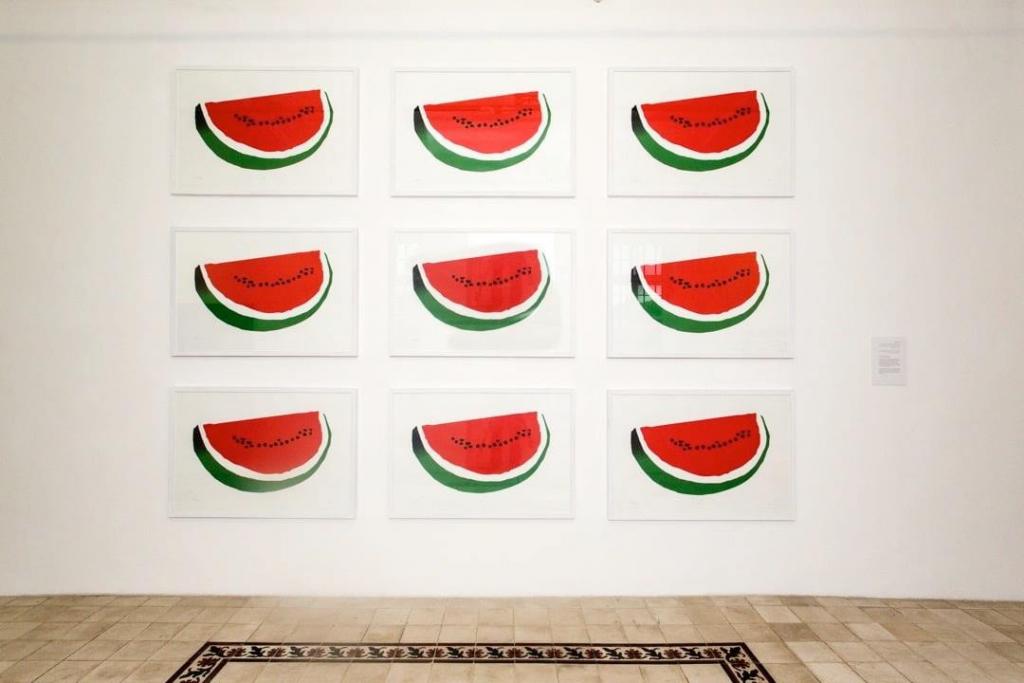Excerpt:
Hyperallergic
How Watermelon Became a Symbol of Palestinian Resistance
A new tradition is emerging online, uniting Palestinians worldwide and drawing influence from the 20th-century motif.
Billie Anania - July 29, 2021
In occupied Palestine, watermelon is a symbol of resistance. With its colors mirroring the Palestinian flag, the fruit can be seen from the stone walls of Gaza to the galleries of Ramallah, hinting at the political history of a cherished summer fruit.
Over several decades, the Palestinian watermelon has become a public expression of cultural pride in artworks representing the struggle against Israeli apartheid. Now, a new tradition is emerging online, uniting Palestinians worldwide and drawing influence from those who fought for free expression throughout the late 20th century. Since the protests sparked by Israeli violence in Sheikh Jarrah, their story — cleverly encapsulated in a minimalist silkscreen of a watermelon — is experiencing a resurgence thanks to younger generations of artists.
After the Six-Day War in 1967, the Israeli government banned all public displays of the Palestinian flag and its colors. Any outward show of the flag, from publications to advertisements and even old photographs, could result in imprisonment or worse. Watermelon — with its red, green, black, and white coloring — became a subtle method for Palestinians to display national pride. Even holding a slice of fresh watermelon outside became an act of protest.

